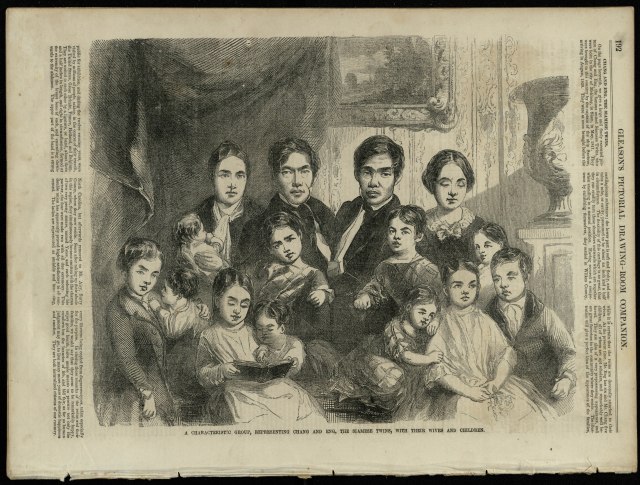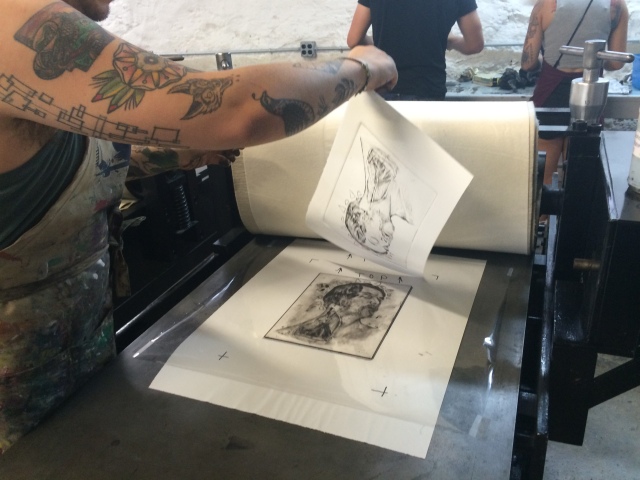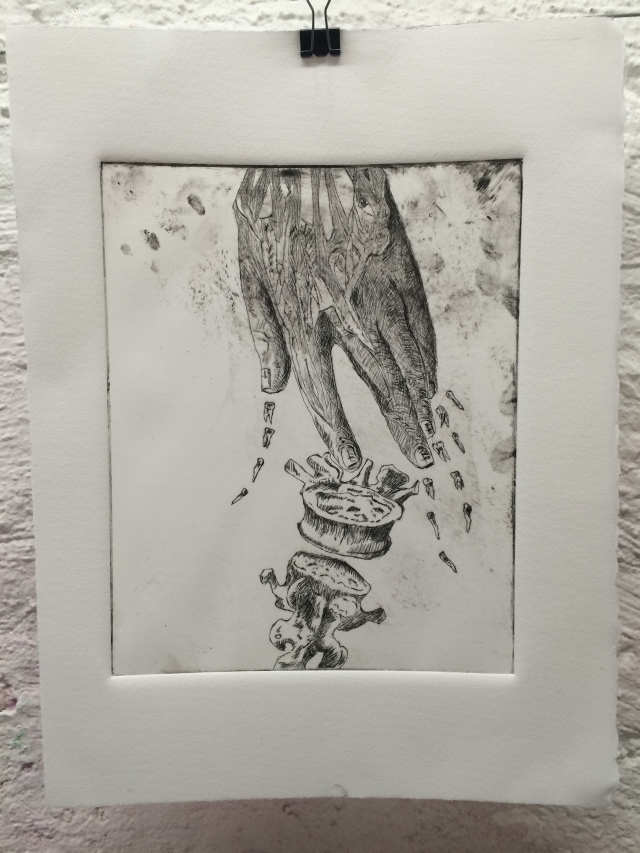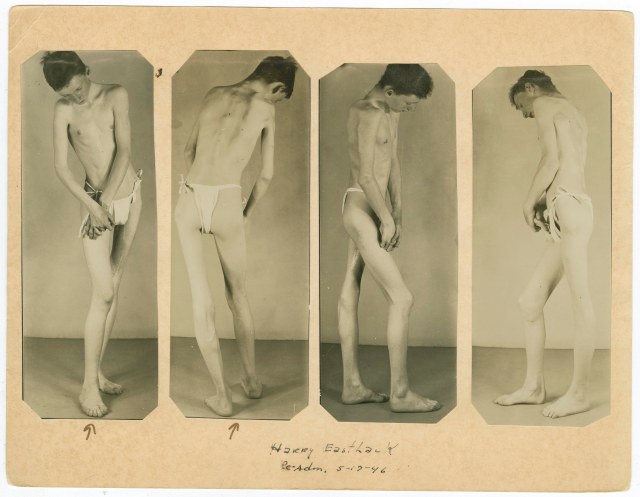
Hello, fellow historio-medico afficionadnos, and welcome to another installment of CEPI Curiosities, CEPI’s closer look at medicine’s disturbingly informative past. I’m happy to announce the next few articles come from a special guest author. Paul Robbins, a student in our Karabots Junior Fellows Program, has conducted research on some of his favorite specimens in the Mütter Museum (regular readers will recall another student in the Karabots Program, Vashon Chapman, provided us with an article last week on the differences between venoms and poisons). Today, Paul has chosen to write on the lives and times of Chang and Eng Bunker.
The floor is yours, Paul!
Chang and Eng were the “Original Siamese Twins.” They were conjoined twins born in Siam, which is now Thailand, on May 11, 1811. They enjoyed their heyday and international popularity as human wonders.
Chang and Eng were bonded together by 4-5 inch piece of flesh and joined by their livers. This specific type of conjoined twins is considered Xiphopagus, a form of Omphalopagus. Omphalopagus is a connection from the breastbone to the hip (pagus is a latin word meaning “That which is fixed” or “That which is stuck”). Only 4% of twins are diagnosed with omphalopagus.

Image of the lives of Chang and Eng
The brothers were discovered in 1829, swimming in a pool, by a Scottish merchant named Robert Hunter. After seeing that amazing sight, Hunter asked the twins’ parents for a permit to take the boys and put them in a circus to show them off to the world on a world tour. After multiple years of touring with Robert Hunter, the boys realized how famous they were and split off the contract with Hunter and went into the circus business representing themselves. A couple years later while touring the United States, the twins became attracted to an area in North Carolina and purchased a piece of land there where they met their wives: Sarah Ann and Adelaide Yates. After marrying the two (unjoined) sisters, Chang and Eng quit their circus act to settle down and live normal lives with their wives and 21 children.

The twins’ lives became extremely complicated when the Civil War broke out. The loss of Chang’s two daughters forced Chang to become a heavy drinker. Eng never drank, nor did he share the effect of Chang’s drunkenness. The Bunker twins also lost a lot of money. Ruined, aged, and bitter at age 54 years old, Chang and Eng had no other option but to go back into the circus.
Unfortunately their return attempt caused a lot of problems. Chang and Eng were no longer novel. To attract an audience they had an idea to bring two of their normal children on the tour as an exhibit. The idea worked for a short amount of time, but the audience viewed the Bunker brothers as “physically damaged.” After a few years of touring the United States their sight started to decline due to their health. Chang was partially deaf and weakened by alcohol.
In 1868, the twins accepted P.T. Barnum’s offer to tour Europe and he made a request for them to get surgically separated. Chang and Eng had no need nor want to separate and refused Barnum’s request. To the twins, just the thought of becoming separated was taboo, but it became clear that two aging connected bodies would become an exhausting problem in the future. Towards the end of their lives Chang and Eng became obsessed with the idea of separation, scared that one would have to carry around his brother’s corpse. Scared, tired and frustrated, the twins began to grow tired of each other and began arguing a lot. Soon after their conflict began, Chang had a stroke that paralyzed his lower body. Tired of dragging his brother around, Eng traveled to Philadelphia, begging and pleading local doctors to split them. Chang and Eng’s wives feared that the separation would be too risky and dangerous and talked Chang and Eng out of the separation. Several months later, when Chang and Eng’s problems were at an all-time high, the same doctors that were supposed to split them were called to their house to confirm their deaths. On January 17, 1874, Chang died of a stroke and three hours later his brother Eng died of a heart attack. Their last request was to be buried together.

Death cast of Chang and Eng Bunker,The Mütter Museum
Until next time, catch you on the strange side!
Sources:
http://www.dailymail.co.uk/news/article-2825888/How-original-Siamese-twins-21-children-two-sisters-sharing-one-reinforced-bed.html
http://ncpedia.org/biography/bunker-twins
http://www.atlasobscura.com/articles/morbid-monday-the-demise-of-chang-and-eng
http://www.infoplease.com/biography/var/changandengbunker.html














